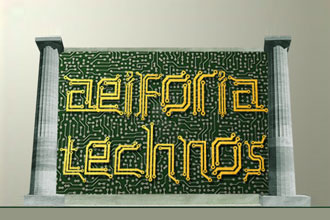Have a Coke and a Smile
 How many of your workforce are part of the Millennial Generation (born between 1977-1994)? How many of your client’s workforce is in this category? This generation now makes up one third of the current workforce and will make up three-quarters by 2025. Most of this group has never known a time without cable television, cell phones and many other technologies that would never have crossed Gen-X or Baby Boomers’ minds at their young age. Technology is so pervasive in their lives that 97 percent own a computer, 94 percent own a cell phone, and 56 percent own some sort of MP3 player. Instant messaging, selfies, news gathering from the Internet and social media are their Ether. Why is this important, you ask? Because these connected kids are not only wired to the hilt, but also thrive on social justice, having more in common with the”civic minded” G.I. Generation than the “me” generation of the Gen-Xer’s or the counter culture of the hippie generation.
How many of your workforce are part of the Millennial Generation (born between 1977-1994)? How many of your client’s workforce is in this category? This generation now makes up one third of the current workforce and will make up three-quarters by 2025. Most of this group has never known a time without cable television, cell phones and many other technologies that would never have crossed Gen-X or Baby Boomers’ minds at their young age. Technology is so pervasive in their lives that 97 percent own a computer, 94 percent own a cell phone, and 56 percent own some sort of MP3 player. Instant messaging, selfies, news gathering from the Internet and social media are their Ether. Why is this important, you ask? Because these connected kids are not only wired to the hilt, but also thrive on social justice, having more in common with the”civic minded” G.I. Generation than the “me” generation of the Gen-Xer’s or the counter culture of the hippie generation.
This generation is bent on reuse, recycling, shedding excess, and minimizing material possessions. They are a maker generation but with technology and information at their fingertips. They value the environment and demand social justice and equality and companies have taken notice. For decades, companies have been touting why their product was “good for you”. Now they tell you how it is good for the world and the earth and the millennials are listening. There are many examples but one major one is Coca-Cola. It has often been said that there are two things that no matter where you travel in the world people will recognize — The Bible and Coke. With this much influence in the world, it is fascinating that Coke can be so forward thinking to reach their market on their customer’s terms.
For example, Coke has been investing in next generation energy management and performance systems as a corporate best practice. This isn’t just a feel good campaign but has a healthy positive effect on their bottom line. As I have written about in many previous articles, Wal-Mart, Starbucks, Apple, and others are also rising up. So what is Coke up to? For starters they are using deep energy retrofits which are producing some surprising results. Employee productivity, engagement, increased retention and a lowering of absenteeism are just a few. One of the biggest advantages however is the attraction of the Millennials to work there.
Case in point, Coke recently moved its Canadian headquarters out of the burbs and into downtown Toronto which helped achieve its energy performance goal and many added benefits. Their aggressive work-at-home policy (sorry Yahoo) has reduced the amount of square feet required per worker. They have accommodated the transients with hoteling stations and reduced the square footage of the existing space per employee. Additionally Coke has deployed a smart building technology strategy that reduces energy demand on HVAC, lighting, audiovisual, and IT and by retrofitting an existing building have taken advantage of the embodied energy within the structure instead of having to rely on new construction.
They have found that the Millennials want to work for these types of companies bringing quite a lot of brain power with them. Having a lower carbon footprint is a major selling point. Millennials also tend to live in urban areas relying more on public transportation, bicycling to work or simply walking. They believe that a healthy work environment directly affects their ability to perform and the science backs them up.
Recently (April 2014 – Next Generation Energy Management: A Roadmap to the Next Level of Performance) the Rocky Mountain Institute and CoreNet Global did a research study that identified nine key drivers that create and enable an increased demand for business strategies that include next generation energy management and performance. This includes 1) Energy Cost Savings, 2) Risk Mitigation and Management, 3) Workplace Transformation, 4) Sustainability, 5) Stakeholder Demand for Sustainability, 6) Capital Availability, 7) Smart Building Technology, 8) Healthy Buildings, and9)Electricity Grid Evolution. In this study, key metrics were identified that demonstrate not only the value of energy efficiency on the bottom line but on the environment, and in how a company is perceived in society.
It is a wonderful thing to watch the corporate world move to reach to this demographic and how this demographic has brought technology, efficiency, and a social conscience to corporations. As you look around your own company you might find similar attitudes with the younger generation and engage them to help you communicate with your clients on how your core business and services in the ICT industry can help them attract and retain the Next Generation with energy efficiency in mind.




